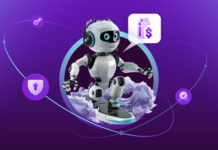Check out the previous installment of this series: “The Times They Are a-Changing: Talent in the Contact Center Part 3: Rise of the Machines – Meet the Virtual Agent”
In today’s contact center, employees use statistics from ACD reports, quality surveys, and staffing systems to adjust routing rules, suggest agent coaching programs, and adjust staff schedules. Many of these employees worked their way up from jobs as agents or supervisors in the contact center, and may even share the “analytics” responsibility with other managerial responsibilities in the contact center. However, to be successful in the increasingly competitive game of customer delight, a different approach is necessary.
Data is the New Oil – Data Scientists in the Contact Center
“Data is the new oil. It’s valuable, but if unrefined it cannot really be used. It has to be changed into gas, plastic, chemicals, etc. to create a valuable entity that drives profitable activity; so must data be broken down, analyzed for it to have value.” – Clive Humby, data scientist pioneer
There is a data explosion occurring, with the amount of total data in the world doubling every 3 years and no end in site. Harnessing that data will fuel the economies of tomorrow. Experts in this field are called data scientists, an occupation that Harvard Business Review calls “The Sexiest Job of the 21st Century.” Data has already revolutionized professional sports – just watch baseball fielders employ “the shift” to one side of the playing field because of the statistical hitting patterns of individual batters. Data is about to revolutionize contact centers as well.
Data is generally classified into two types: structured and unstructured. Structured data has long been a foundation of contact center management – data that is in a well-organized database with keys and cross-references such as talk time organized by agent, group and queue. Unstructured data is more raw, as in the contents of a conversation. Digital conversations like chat and email have rich transcripts waiting to be mined, and with advances in Speech Recognition technology, voice conversations can be mined in a similar manner. Speech and Text Analytics can be used to decipher and categorize conversations into a structured database – for example, indexing interactions where callers exhibit frustration or agents use inappropriate language.
The data scientist’s job in the emerging contact center is to make sense of all this information, and put it into action to improve business outcomes. Let’s look at a few roles for data scientists.
Crunching the Numbers – The Data Analysts
Data analysts use specialized analytics tools to seek out trends and gain insights, and help to design solutions. The data analyst looks for correlations in structured and unstructured data. For instance, one contact center discovered via Speech Analytics that subscribers who mention a competitor’s price in a conversation with an agent are significantly more likely than other customers to eventually leave for a competitor.
To expand the scope of insights, data scientists may combine information from inside the contact center with data from external sources. A wealth of valuable data sets exist in the public domain. For instance, a complete database of Amazon Customer Reviews and Yelp Reviews is available online and contains invaluable data on customer sentiment. A manufacturer or retailer could use these reviews to evaluate the performance of their own products and services, as well as that of their competitors. These insights can help to train agents on what aspects of a product to emphasize in sales conversations. Other valuable tools are available at no cost, such as Google Cloud Public Data Sets, which provides the ability to search of over 100 public data sets, and Google Trends, which can be used to examine web search history as well as real-time search trends.
A creative data analyst will work with others in the contact center to develop solutions to the problems or opportunities that they have identified. Data analysts’ insights can be used to:
- adjust hiring practices
- change staffing levels
- fine tune agent scripts
- adjust existing training or create whole new modules
- create new customer interaction program initiatives
For instance, an appropriate countermeasure for the subscriber churn risk discussed above could be a proactive outreach to all customers who mention a competitor’s price in an interaction, enticing them into a long-term commitment with a special offer.
The data analysts will also provide key insights for the bot team. Customer interaction trends can be used to decide where to deploy bots, and how to fine-tune their performance in the field. The bots themselves will be developed by another kind of data scientist.
Building the Future – The Conversational Developers
Bot development first requires a recognition of what kinds of problems are well-suited to automation and which are best left for the human agents. The next requirement is fluency in the specialized set of natural language tools that drive many bots, such as Google DialogFlow and IBM Watson, and an understanding of which tools are best for which types of conversations. Bot developers use the data and the insights from the data analysts to design bot solutions, and train the bots to become better at their tasks.
We will refer to such people as conversational developers. They understand how computers “think” and react to inputs, which enables a better grasp of when and why to expect the unexpected, and thus how to avoid it. They use the confidence level in a result produced by the data analysts to know when to “suggest” an answer and when to “declare” an action.
These technical workers are akin to the “front end developers” in the software world. A good front end developer is paired with a partner-in-crime, the User Interface designer. For bot design, that person is called the conversational designer – a new role that is part of the team authoring the playbook for the next-generation contact center.
Check out the next installment of this series: “The Times They Are a-Changing: Talent in the Contact Center Part 5: Playbook Writers”





